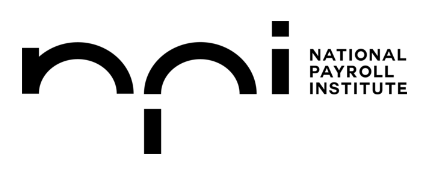Pay statements (or pay stubs) and T4 tax slips ensure more than just compliance with legislation. They provide transparency and strengthen trust between employers and employees. Here’s what to include on pay statements and tax slips, best practices for delivering them, and strategies to enhance efficiency and compliance in Canada.
What to Include

What employers must show on pay statements varies by province and territory and generally includes:
- Employee name
- Employer name
- Pay period, including the start and end dates
- Date of payment
- Rate of pay
- Itemized earnings details of:
- Regular wages
- Overtime
- Bonuses or commissions
- Other allowances
- Deductions, including:
- Statutory deductions for Canada Pension Plan, Employment Insurance, and federal and provincial taxes
- Compulsory deductions (e.g., retirement plans, union dues)
- Voluntary deductions
- Hours worked, including regular and overtime hours, if applicable
- Net pay, which is the amount the employee receives after all deductions
T4 slips are government forms that employers must complete for each employee. They identify all of the remuneration paid by an employer to an employee during a calendar year.
Delivery Methods
When it comes to getting pay statements and tax slips to employees, employers should adopt the following best practices to ensure compliance and employee satisfaction:
1. Timeliness is essential.
- Pay statements must be delivered on or before payday. Follow a predictable payroll cycle to avoid delays and confusion.
- T4s must be filed with the Canada Revenue Agency and distributed to employees by the last day of February following the tax year.
2. Make sure information is secure.
- Digital delivery: Use secure online platforms or payroll software that employees can access with unique login credentials. Ensure data encryption and compliance with privacy laws like the Personal Information Protection and Electronic Documents Act.
- Printed copies: If distributing physical copies, ensure secure distribution methods to prevent unauthorized access.
3. Make sure information is accessible.
- Provide pay statements in a format that employees can easily access, read and understand.
- Accommodate employees with disabilities by offering alternative formats (e.g., large print or braille).
4. Obtain employee consent for electronic delivery.
- In some jurisdictions, employee consent is required to deliver pay statements electronically. Keep records of this consent and provide paper copies upon request.
- Employers can distribute tax forms such T4 slips through a secure portal without obtaining written consent from the employee as long as some conditions are met.
5. Have a plan for records retention.
- The information contained in an employee’s pay statement is regarded as a record of an employee’s earnings and deductions for a particular pay period. Each jurisdiction sets its own rules as to how long such records must be retained. Written permission is required for earlier destruction.
- For year-end tax slips, the Income Tax Act from the Canada Revenue Agency requires retention for six years from the end of the last tax year they relate to.
- Use organized, secure storage systems for easy retrieval in case of audits or employee inquiries.
6. Be transparent in communications.
- Clearly explain all deductions, benefits and earning categories on the pay statement.
- Provide employees with resources or contacts for any payroll-related questions.
7. Comply with employment standards.
- Stay up to date on changes to employment standards legislation across Canada to ensure pay statements meet legal requirements in the specific province or territory where your organization has employees.
Audit and Quality Control
To maintain the integrity of your payroll system, regular audits are essential. Here are three things to verify:
- Pay statements and tax slips accurately reflect employee earnings and deductions.
- Delivery systems are secure and compliant with privacy regulations.
- Employees receive their pay statements and tax slips on time and without discrepancies.
Effective pay statements and tax slip management are essential for fostering trust and compliance in the workplace. For more information on pay statement requirements and best practices, consult the National Payroll Institute’s Pay Statement Payroll Best Practices Guidelines here.
This article excerpted from The National Payroll Institute’s Dialogue Magazine, which is available to members of the National Payroll Institute. If you are not already a member, we encourage you to join.
Photo by LinkedIn Sales Solutions on Unsplash
